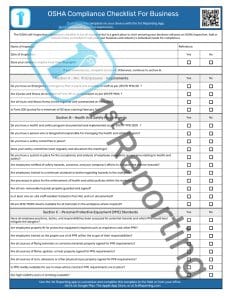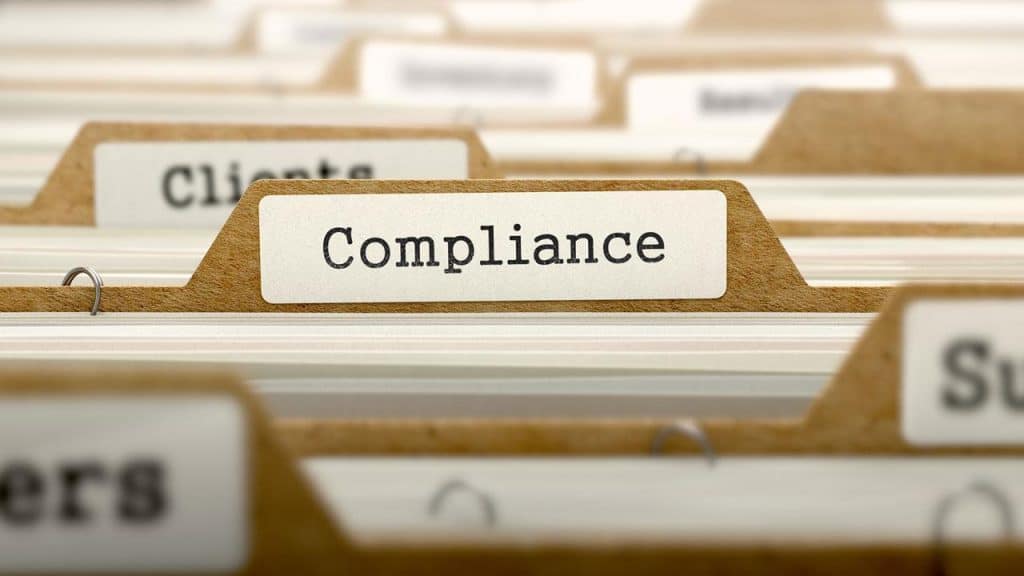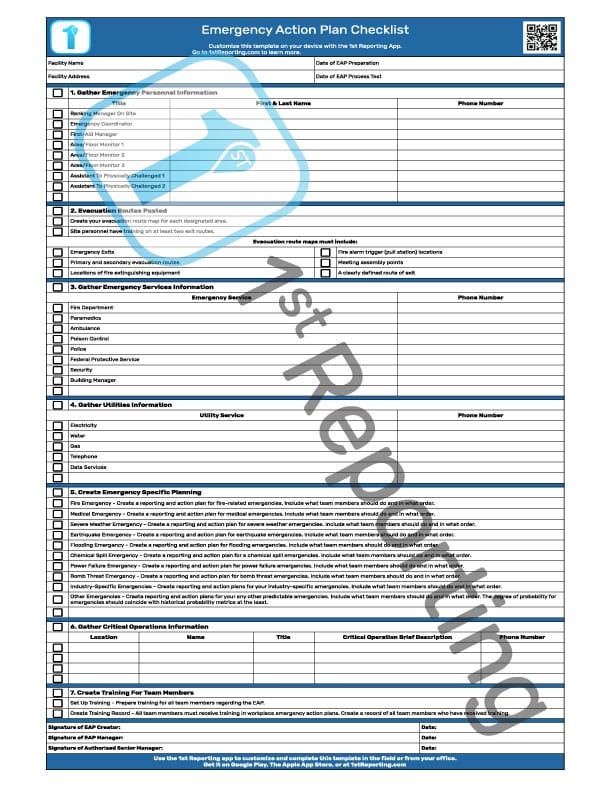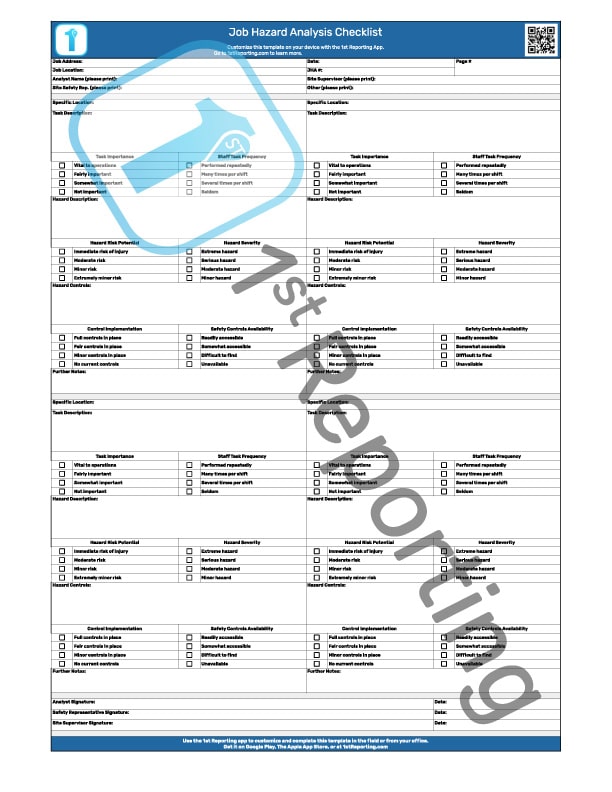Compliance safety and health officers employed by the OSHA can show up at your work anytime. Using an OSHA Inspection Checklist to aid your company’s compliance and preparation for potential inspections is brilliant if you want to pass your inspections. So, we’ve developed a downloadable OSHA Compliance Inspection Checklist to do just that – help your business stay compliant and prepare for inspection officers.
Although your business may indeed request an inspection warrant before a safety and health officer enters your facility, it is a taboo method of delaying your inspection. Not only that, but don’t think for a moment that the inspector won’t red-flag your business for refusing a spot inspection. It will ensure that the inspector leaves no stone unturned, which could be detrimental to your operations if shutdowns are required for safe inspecting. (source)
To maintain your business compliance with OSHA minimum standards, downloading our OSHA Compliance Inspection Checklist* is a great way to get started. Although it may not include everything your particular business must comply with (depending on your industry and business operation particulars), the checklist will ensure you get started with the right mindset – and check for the most common infractions before an inspector finds your business negligent.
Included In The OSHA Inspection Checklist

The hefty OSHS Inspection Checklist we have created for you is a seven-page downloadable that you can easily print. The checklist is pre-formatted for standard 8-inch by 11-inch paper and ready to assist your inspection and compliance preparation project.
Although not a digital solution like you will find here at 1st Reporting, the downloadable 7-page inspection checklist is a great way to move your business into a more compliant framework.
Included in our OSHA Compliance Inspection Checklist, you’ll find 12 sections that guide you through the self-inspection framework. These sections include the following:
- Administrative Information
- Section A – Min. 10 Employees – Requirements
- Section B – Health And Safety Requirements
- Section C – Personal Protective Equipment (PPE) Standards
- Section D – Combustible, Flammable, And Explosive Materials
- Section E – Fire Prevention
- Section F – Tools And Equipment
- Section G – Lockout/Tagout
- Section H – Confined Space And Working At Heights
- Section I – Electrical Hazards
- Section J – General Conditions
- Section K – Hazard Communication And Signage
Each section should be self-explanatory as to the intent. However, we’ll discuss each in slightly greater detail in the next section, where you’ll find instructions, tips, and best practices for your self-inspection methodology and use of the OSHA Compliance Inspection Checklist.
How To Use The OSHA Compliance Inspection Checklist
The OSHA Compliance Inspection Checklist (OCIC for short) is intended to help your business comply with OSHA regulations.
Administrative Information
Like any report, checklist, audit, or inspection document, the administrative information needs to include the date, inspector name, and reference number at the top of the document.
Similarly, at the end of the checklist, there is a sign-off and a date section where the inspector can sign off on their checklist, verifying the authenticity and promoting truthful and honest inspecting and reporting practices.
Section A – Min. 10 Employees – Requirements
To begin your compliance journey, there is an initial question regarding the size of the company (number of employees). Although the standards and requirements change with even more employees, employers’ first set of requirements above the minimum responsibilities comes into play with more than ten employees.
Beyond ten employees with more significant numbers, like 50 or more, will carry new potential requirements. We assume that companies of this size or more significant will already have a system for self-inspection, like utilizing a digital reporting platform like the 1st Reporting app, for example.
Section B – Health And Safety Requirements
Health and safety requirements are essential to running a safe and compliant operation. Section B of the OSHA Inspection Checklist aims to assist you with your business compliance regarding the health and safety of your workforce.
Section C – Personal Protective Equipment (PPE) Standards
Personal protective equipment (PPE) is vital and a legal requirement at work for any staff who might be in a position to require it. From office staff wearing high visibility vests when walking through a warehouse to an electrician fully garbed in arc flash protective gear, there are countless scenarios where staff require PPE to stay safe. Section C of the OSHA Inspection Checklist aims to guide you through the jungle of PPE and point you in the right direction.
Section D – Combustible, Flammable, And Explosive Materials
When your business works with combustible or explosive materials, it becomes a significant source of building fires, dangerous situations, and even deadly scenarios.
The OSHA never ignores safety, and fire is as dangerous to staff as it has always been, regardless of modern technology. This section of the checklist will help you consider many of the safety facility requirements regarding fire, explosion, and combustibles.
Section E – Fire Prevention
As we discussed in Section D, Section E also focuses on fire. However, this time, the angle is more preventive than reactive. The Fire Prevention section deals with topics such as fire extinguishers and alarm systems and will help you consider the possibilities for compliance and job site safety.
Section F – Tools And Equipment
Tools, equipment, and vehicles of different types and purposes are used in almost every business. Whether your maintenance department, forklift-driving shippers or receivers, or other folks at your company use tools, vehicles, or equipment, safety comes first. Section F aims to aid you in maintaining smart and safe operations regarding tools, equipment, and company vehicle use, as well as vehicle inspections.
Section G – Lockout/Tagout
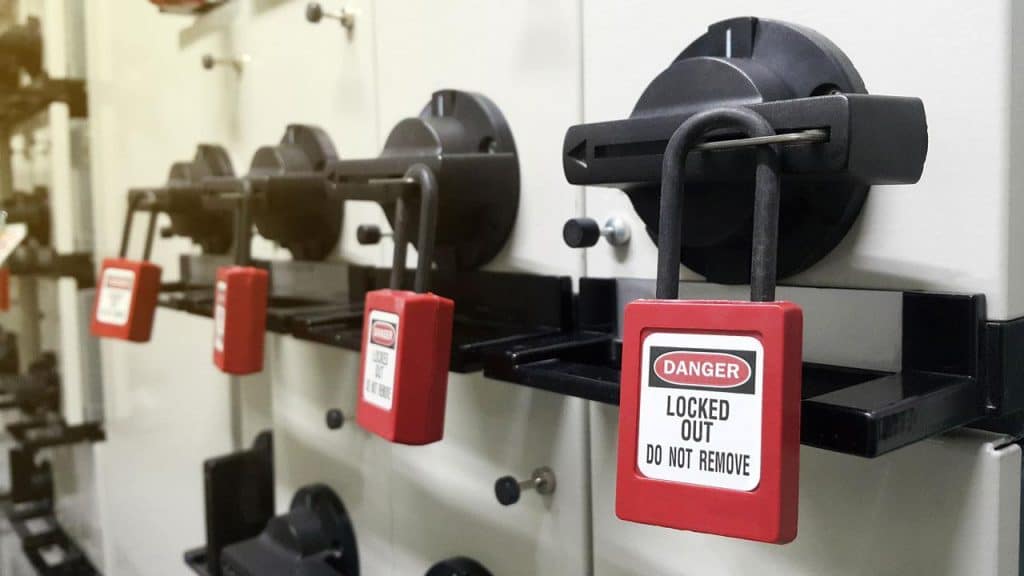
Lockout/Tagout, or LOTO for short, is something that nearly every business in nearly every industry needs to be familiar with, if not already. OSHA pays attention to LOTO, which is an essential part of injury prevention, and so should you, using the LOTO section of the OSHA Inspection Checklist.
Section H – Confined Space And Working At Heights
According to the U.S. Bureau of Labor Statistics, between 2011 and 2018, over 1000 workers died from confined space incidents. That’s over 1000 reasons to take confined spaces seriously in the workplace. The section on confined space also deals with issues pertaining to working at heights. The concept is to understand the nature and hazards of potential working conditions and cover your bases to prevent accidents. Use Section H of the checklist to aid you in this endeavor.
Section I – Electrical Hazards
Electricity is one of the most dangerous hazards. You can’t smell it, you can’t hear it travel through conductive materials, and you won’t know something is electrified unless you find out by testing it or by accident. Electricity is invisible unless it is arcing at a very high voltage.
According to an article published in 1966 by Oxford Academic, as little as 0.1 amps might be enough to kill a person. We’ve known electricity is hazardous for quite some time. The OSHA knows it, too, which is why we need to include electrical safety in our workplace safety regiment.
Section J – General Conditions
The general conditions of the inspection checklist pertain to general workplace conditions and focus on things like walkways, air quality, cleanliness, housekeeping, and other general workplace issues that might be a root cause for incidents or accidents such as employee injuries.
Section K – Hazard Communication And Signage
If you aren’t sure what you need to post within your business, this section will help guide you. However, due to the extent of different industries, each with their requirements for signage, you may want to consult the elaws Advisors Compliance Assistance Resources of the U.S. Department of Labor.
The DOL maintains the FirstStep Employment Law Advisor, which will help you understand your industry and business requirements for compliance postering and other compliance issues.
Here are some handy resources to aid you in your quest for compliance:
- FirstStep – Employment Law Overview Advisor
- FirstStep – Recordkeeping, Reporting, and Notices Advisor
- FirstStep – Poster Advisor
Benefits Of Preparing For OSHA Inspections And Compliance
At this point, we assume you have a reasonably good idea about the benefits of preventing injuries, accidents, and workplace issues. The primary goal is to maintain a safe working environment where staff can safely and, without duress, perform their assigned duties.
Aside from the obviousness of preventing injuries, businesses also benefit from compliance with OSHA standards and regulations in several ways.
Limiting Risk Exposure
When a business does its due diligence to prevent accidents and apply safe working practices, it limits the business’s risk exposure. These risks include:
- Fines
- Business Shutdowns
- Legal Battles
- Bad Press
None of these exposures are worth risking for any business. A lousy article on the internet condemning a business’s poor safety practices can be devastating to the business, setting aside the apparent danger to staff, which should always take priority.
Maintaining Clean Records
Maintaining clean records, audits, checklists, and inspections is a great way to prove to anyone that your business is doing its best to maintain a safe working environment.
Another benefit of maintaining good records is that when the OSHA selects your business for inspection, your recordkeeping may just become a note of your forward-thinking compliance in your business file at the OSHA. The inspectors do their due diligence to research your company before you even know an inspection is coming. Wouldn’t it be great if there were notes in their file about how compliant and organized your business is regarding health, safety, and legislation?
Building A Better Culture
Any employee who fears for their safety at work will tell you that it’s an environment no one should ever be subjected to experiencing. A company that maintains regular self-inspections, safety audits, and operational investigations is a company that proves to its staff through action that the safety of employees is a foremost concern. Actions speak louder than words, and so should your health and safety practices.
Self-Inspection Processes To Increase Efficiency And Save Capital
Suppose you’ve heard the horror stories of sub-par businesses being shut down temporarily or even permanently, facing hefty fines, and even managers being held liable. In that case, you have an idea about some of the benefits of maintaining compliance.
With regards to saving capital, it’s typically more cost-effective to manage prevention rather than reaction. When an incident occurs, all eyes are focused on a business and how it conducts its safety.
Creating procedures for regular self-inspections to increase operational efficiency is vital to preventing costly shutdowns, even if temporary, due to OSHA compliance infractions.
The cost of shutdowns alone may be more than enough to convince you. If not, the fines that your business could face should turn your face white. And the concept of managers being held liable for potential workplace infractions should turn your hair white, too.
That’s why it is vital to perform self-inspections, audits, and complete checklists to aid in your business striving for full and celebrated compliance.
If you’re looking for a more efficient solution than downloading and printing a handy seven-page self-inspection checklist, consider a digital reporting solution like that offered by 1st Reporting.
With a digital reporting solution, you can:
- Customize digital checklists, audits, and forms starting with our library of included templates
- Customize automated notifications to automate your reporting process
- Generate reports to see trends in your reporting and safety for better hazard prevention and mitigation
- Know when a report is submitted via the customized notification system
- Collaborate with others via a mobile platform that works on most PCs, Android, and iOS devices
- Pull previous reports near-instantly via the cloud-based application database
Still not convinced? Take the 1st Reporting app out for a spin and see for yourself how it can aid your business to improve and automate your reporting, auditing, and inspections.
* Disclaimer: This article and checklist were not created by nor endorsed by the Occupational Safety and Health Administration. 1st Reporting is not affiliated with the OSHA. For your business and personal compliance, we recommend you contact the OSHA via your local OSHA state office and consult with them about your business compliance with OSHA standards.
